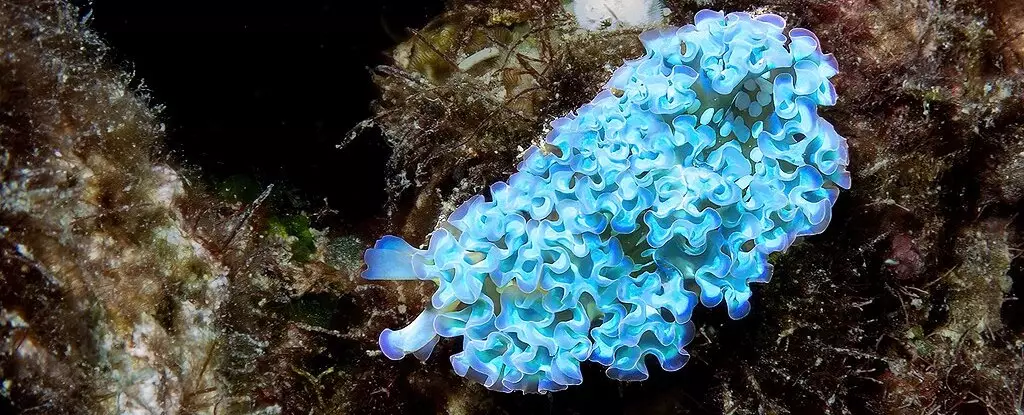In the underwater realm, survival often hinges on a mutually beneficial relationship among species. However, the lettuce sea slug (Elysia crispata) takes survival to a new dimension with its audacious, almost mischievous approach. This peculiar mollusk, often mistaken for a garnish in an alien salad, engages in a radical form of kleptoplasty – a term that signifies its capability to steal and utilize chloroplasts from the algal meals it consumes. The techniques of this creature shine a light on a broader question: What does survival mean in the modern world? The lettuce sea slug’s greed for resources presents a remarkable case where stealing is not just an act of desperation but an innovative survival tactic.
The Science Behind the Theft
Diving deeper into the biological mechanics of the lettuce sea slug reveals a staggering truth: it doesn’t merely digest the chloroplasts from its food, absorbing the essence of the algae; rather, it cleverly hoards these organelles within specialized sacs known as ‘kleptosomes.’ This sophisticated biological maneuver allows the slug to integrate the stolen parts into its own cellular system, effectively granting it a solar-powered existence. Imagine a creature that can generate its energy from sunlight while being both predator and prey in an ecosystem. This absurd capability—akin to the mythical Kirby absorbing powers from its foes—invites us to reconsider the very fabric of our understanding of life forms.
Why Nature’s Thievery Matters
To conventionally think of stealing as an immoral act is to impose human ethics onto the grand tapestry of nature. The lettuce sea slug represents a fascinating departure from our anthropocentric views. Its lifestyle emphasizes an ecological anarchism, where the boundaries of ownership are blurred and the line between theft and symbiosis fades away. In a world plagued by resource scarcity and environmental degradation, the slug’s strategy becomes a rich metaphor for innovative survival in the face of adversity. It urges us to examine our practices, perhaps even advocating a more collaborative and adaptable approach to life on Earth. Are we, too, failing to adapt by holding onto antiquated ethics that do not serve us?
The Color Spectrum of Survival
Interestingly, the lettuce sea slug didn’t just limit itself to energy theft. The study from Harvard marks an impressive exploration into the variability in slug coloration connected to its health and diet. Well-nourished slugs flaunt vibrant greens, while those starving for resources quickly turn orange, showcasing the physical manifestations of their status and survival strategy. This dichotomy of colors serves a dual purpose: it’s a signal of wellbeing that also indicates adaptability in dire circumstances. As climate change continues to threaten ecosystems globally, could we learn something from the lettuce sea slug’s capacity to adapt and change? As humans grapple with difficult choices about resource allocation and environmental sustainability, exploring radical adaptability may be key to our future.
Embracing the Unexpected
This investigation into Elysia crispata further implies that complexity might lie at the heart of symbiotic relationships. While often viewed through a lens that prioritizes harmony, nature offers experimentations that defy logic; the slug’s voracious stealing may reflect the reality that life is not just about balance, but a wild, competitive, and sometimes ruthless endeavor. Insight from this organism leads us to challenge our own assumptions about coexistence. Is the slug’s thievery fundamentally different from the corporate battles for resources that plague our world’s economy? This thought-provoking parallel begs us to reconsider our relationship with nature, each other, and the very ethics that govern our actions.
Ultimately, the lettuce sea slug serves as an astonishing metaphor for resilience and cunning. It stands as a call to arms for society to rethink its practices in an age that demands innovation, adaptability, and the audacity to thrive even in the most unconventional ways. While the slug may linger in the shadows of ecology, its lessons are loud and clear: to survive, one must often embrace the unexpected.


Leave a Reply